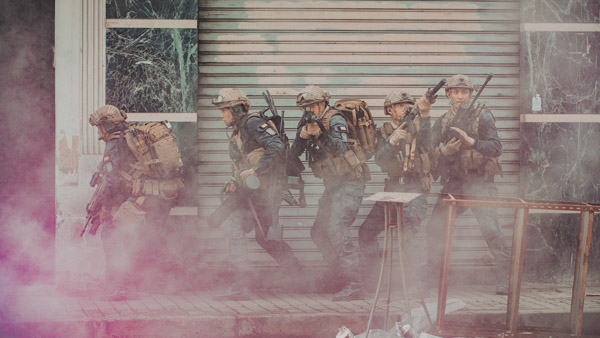 |
|
[Photo provided to China Daily] |
As for the resources that went into the film, Lam received around $60 million for the film from the Bona Film Group. But the entire budget crossed $100 million if the financial support from the Chinese Navy is included.
When it came to the manpower and locations, a 500-plus crew was stationed in Morocco for four months, and the navy offered its military base in Zhanjiang, in Guangdong province, for the movie. Linyi, the frigate which took part in the evacuation of the Chinese citizens from Yemen, also features in the film under its real name.
Speaking about the film and the lengths to which the director went, Zhang Dexiang, the deputy director of the China Literature and Art Critics Association, says: "We have had many military-themed productions in China before, but filmmakers never went to such an extent to make the portrayal realistic. They were much too restrained."
He says filmmakers in the past often worried whether the story would be accepted by foreign audiences, and that influenced the production. "However, this time, the story is told with an open mind. This marks a change of attitude in the Chinese film industry," he says.
Some industry analysts say a film like Operation Red Sea is possible now because of technology, a changed mindset among filmmakers and a change in public perception.